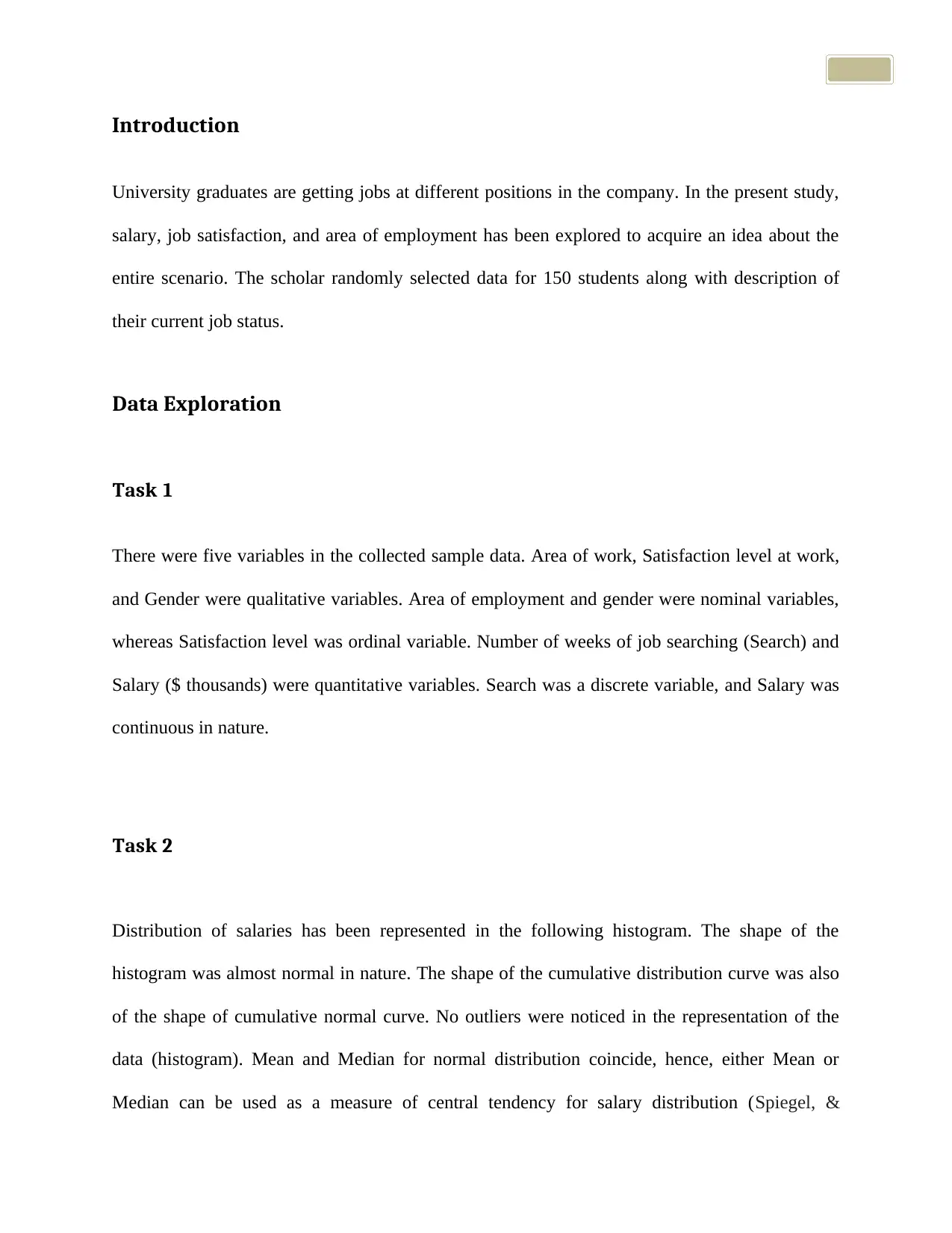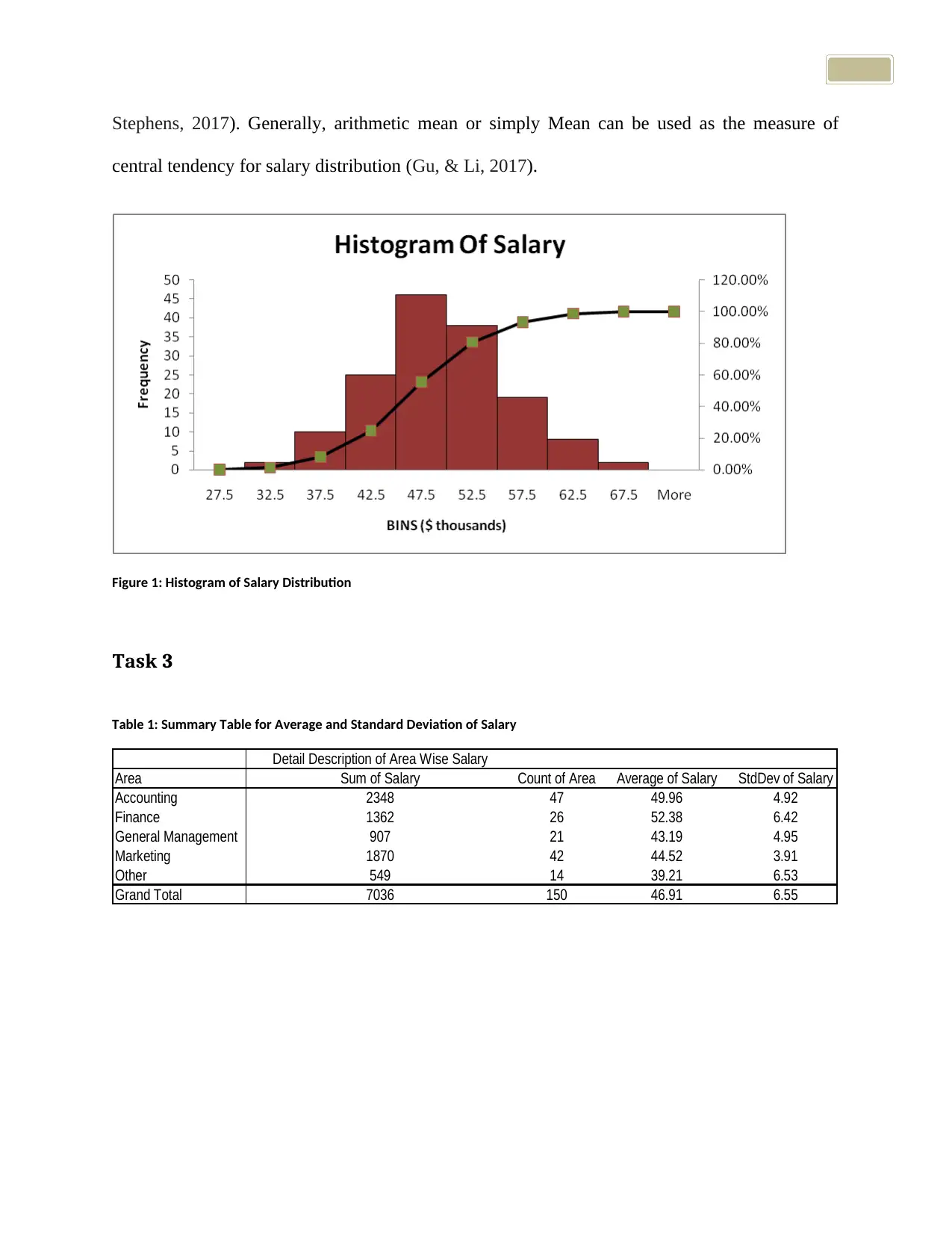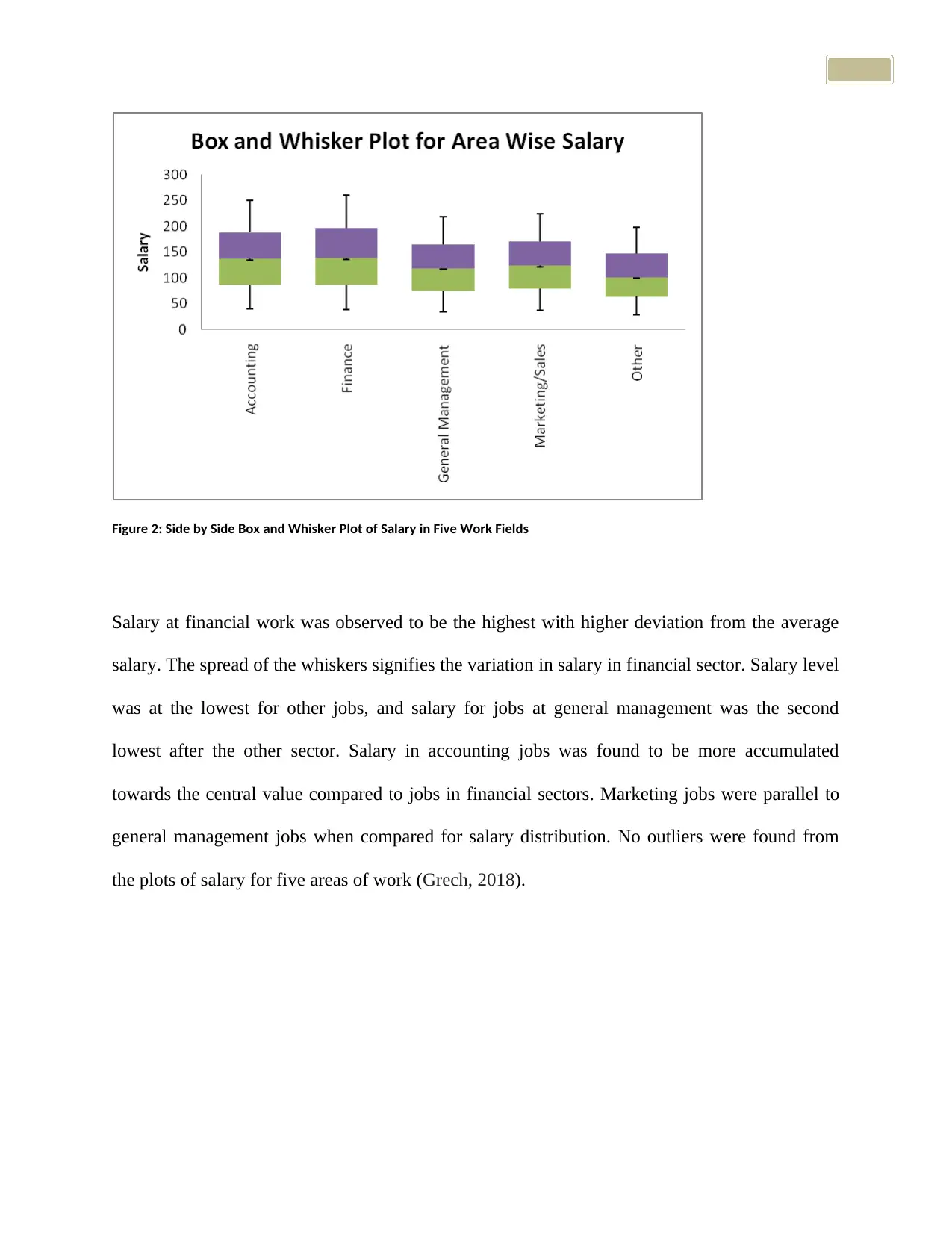University Graduate Employment Status: Statistical Report
VerifiedAdded on 2023/06/04
|7
|1009
|303
Report
AI Summary
This report presents a statistical analysis of the employment status of university graduates, based on a survey of 150 students. The study explores several variables, including area of work, job satisfaction, gender, job search duration, and salary. The analysis includes descriptive statistics, such as mean, median, and standard deviation for salary distribution, and visual representations like histograms and box plots. The report investigates the relationship between salary and employment areas, with finance and accounting sectors showing higher salaries. Job satisfaction levels are examined across different sectors, revealing that marketing jobs were associated with higher satisfaction. Gender-based employment preferences are also analyzed, highlighting differences in the attraction of males and females towards different sectors. The report concludes with an overview of the employment scenario for business school graduates, emphasizing the importance of finance and accounting sectors for salary, and the absence of a specific sector for better satisfaction levels.
1 out of 7












![[object Object]](/_next/static/media/star-bottom.7253800d.svg)